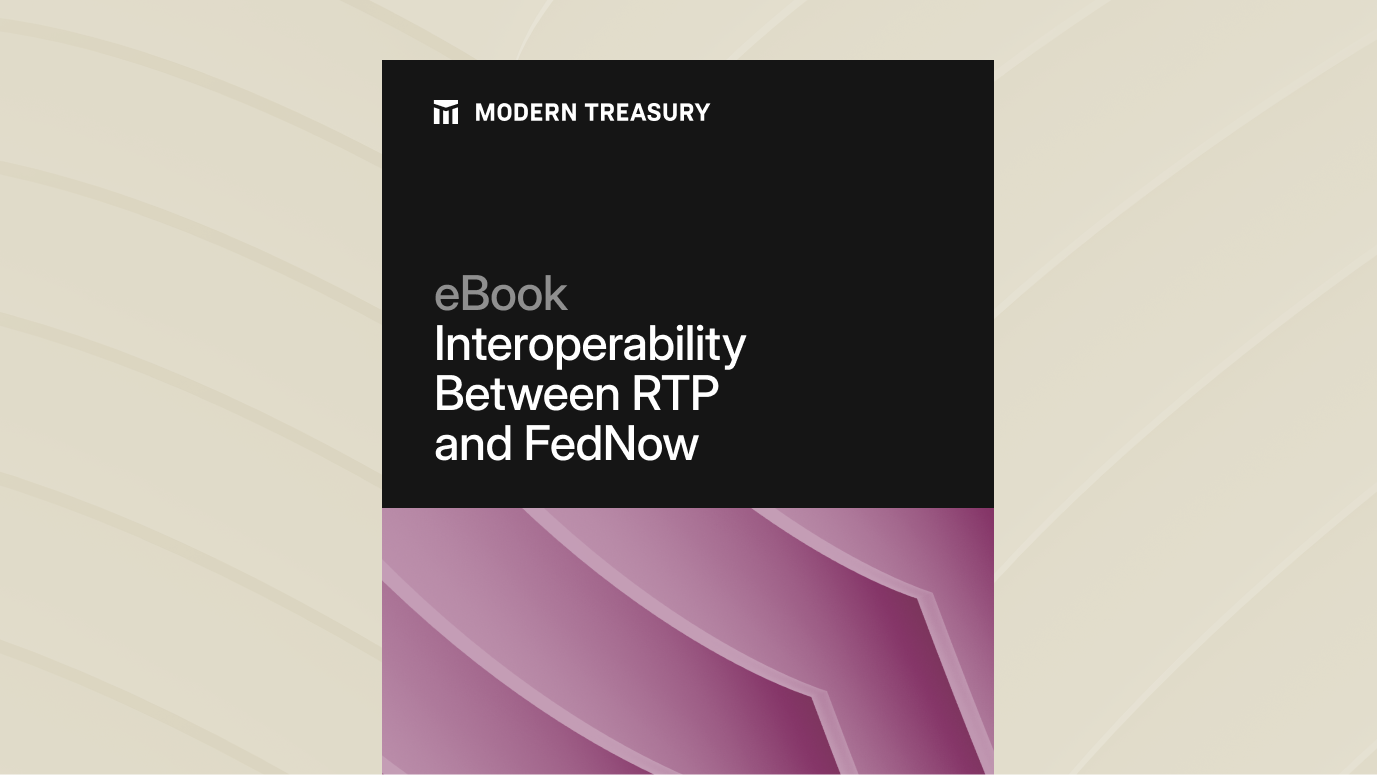Join us at Transfer 2025 to hear how industry leaders are building payments infrastructure for a real-time world.Register Today →
The Real-Time Payments Network Is Here to Stay
Payments expert Cici Northup explains the reasons why the Real-Time Payments network is here to stay.

Financial expert Cici Northup has spent the past decade designing and implementing real-time payment systems in emerging markets in countries across Africa and Asia.
“It’s a broad term, ‘real-time payments,’” Northup recently told Modern Treasury. “But it showcases the general swing we’re seeing in payments where funds are made available to end users immediately, on a 24/7/365 basis at low cost, supported by a variety of institutions and channels.”
In her dual focus on financial inclusion and real-time payments at Glenbrook Partners, a payments strategy consulting firm, Northup has watched real-time payment systems steadily gain traction across the globe over the years. And she’s often seen emerging markets in the vanguard: “There’s a strong correlation between the rise of fast payments and increases in financial inclusion.”
In the US, however, “real-time payments are a newer discussion topic, even as many characteristics of immediate funds have sat on top of or within other core payment systems for years,” she said. The emergence of multiple faster payments systems, including the imminent FedNow alongside RTP, will bring both benefits and risks, she says. And enterprises, businesses and financial institutions (FIs) had better be ready for both.
As they prepare for a 24/7/365 payments environment, what should companies expect?
The benefits are huge. Fast funds’ immediacy and availability is very meaningful—especially to the many small businesses in the US who often live and die by cash flow, though it’s a constant pain point for businesses of all kinds.
If you can get funds in seconds as opposed to days or weeks, that’s transformational in what you can do and invest in, and how you manage and operate your business. The same is true for end users.
There are many, many people in the US living paycheck to paycheck. We’ve seen the value of making their income available to them within minutes, especially with a lower fee attached.
ISO 20022 messaging capabilities, the standard for real-time payments systems, are rich and can also help with reconciliation: Where did a payment come from? What service was it associated with? There’s opportunity for businesses to mature their processes by making sure their own back-end systems can send, receive, and reconcile these messages.
The risks that exist in a real-time environment are also different. We’re seeing different types of fraud schemes, like authorized push payment (APP) fraud. This occurs when fraudsters trick an individual into sending payment to an account owned by the fraudster (or a mule). There are controls to combat APP fraud; for example, data can be used and shared in a smart and secure way, and ecosystem players can come together on this.
What kinds of use cases for real-time payments stand out?
In many ways, real-time payments systems can be designed to support any or all use cases. I’ve seen a few use cases prove to be particularly catalytic. For example, Brazil launched Pix, its instant payment system, during the early stages of the COVID-19 pandemic. They chose to send all government-to-person (G2P) social transfers through Pix, requiring a Pix-enabled account to receive the benefit. As a result, more than 40 million people opened an account at a licensed financial institution. Pix is continuing to advance and is helping foster financial inclusion in the region.
Other use cases are more difficult. Cross-border payments are an interesting but difficult use case. The harmonization requirements magnify. Regulatory environments are country- and region-specific, and so are the rules for operating a domestic, real-time payments system. You’re doubling or even tripling obligations, understandings, and capabilities, and things can get incredibly complicated when you’re trying to transact between them. That being said, there is a notable appetite to support cross-border real-time payments, and we are seeing a variety of multi-country models surface.
What kinds of players are engaging in real-time payments systems?
Across the payments ecosystem (real-time systems and others), we are seeing a trend towards openness. This is typically in relation to open banking, which, through appropriate data sharing, allows third party, non-bank providers to play a role in financial services.
India’s UPI is a great example of how allowing non-bank providers to initiate payments can play a catalytic role in real-time payments access and usage. The EU and UK are also markets to pay attention to related to open banking—led by PSD2, of course. These case studies, and others, are noteworthy considerations for ultimate ubiquity of instant payment systems in the US, particularly FedNow.
What should leaders consider as they prepare for the real-time payments network?
The financial institutions we work with are evaluating which payment scheme or schemes to connect to.
FIs are asking themselves, when do I use what, and why? Which system, and why? How do I get my tech stack ready? How do I prepare my operational teams? Who should I partner with, or what capabilities do I need to build? How do I manage risks in a 24/7 push payment environment?
Beyond getting your technology ready, there’s also the organizational environment. Customer service changes dramatically when you are operating 24/7/365. How will you address that in a meaningful way?
What other payment system innovations lie ahead?
At Glenbrook Partners, we like to talk about the core payment systems that exist in almost every market and are critically important to a country’s well-being. Historically, there’s been five: wires, checks, cards, ACH, and cash. Now there’s a sixth: fast payment systems. Financial institutions typically connect to all of them for different use cases, purposes, goals, and needs. And innovations happen on top of them. Card systems, for example, have been around for a long time, but are constantly evolving to better meet consumer needs. That’s one type of innovation.
Another innovation we’ll be seeing over the next decade is transformation within the cash system, meaning the rise of digital currency systems. There’s been a ton of exploration but no real cementing of what role digital currency systems will play within the context of core systems.
Finally, it’ll be interesting to see how the US faster payments ecosystem will evolve over the next decade. What will an environment with multiple real-time payment systems be like? How do we work across these two rails? We haven’t figured that all out yet, so it’ll be interesting to see.
Be ready for real-time
Make sure you’re all sorted with our guide to faster payments readiness







